Pernille Ripp's Blog, page 16
October 5, 2019
Setting Up Writing Circles in Middle School
This summer, I read the amazing book, Comprehension and Collaboration, 2nd Edition by Stephanie Harvey and Smokey Daniels as I knew I wanted to focus more on building true inquiry into our classroom.
One of the ideas mentioned in the book briefly was the idea of using writing circles, think lit circles but for writing, with students in order for them to gain a more long-term writing community, as well as a more developed relationship to their own role as writers. I loved the idea immediately and wanted to make it work for our kids., as having my own writing circle of trusted peers has helped me tremendously whenever I write books.
To start us off for the year, we discussed positive and negative aspects of writing by brainstorming. The question was based off of the work we have done with reading and followed the same format, rather than post-its, though, they did it in their writer’s notebook on a t-chart and then created a group response at their table. We then discussed as a class and created our writing rights together. These now hang in our room as a reminder of the type of writing experiences we would like to have.
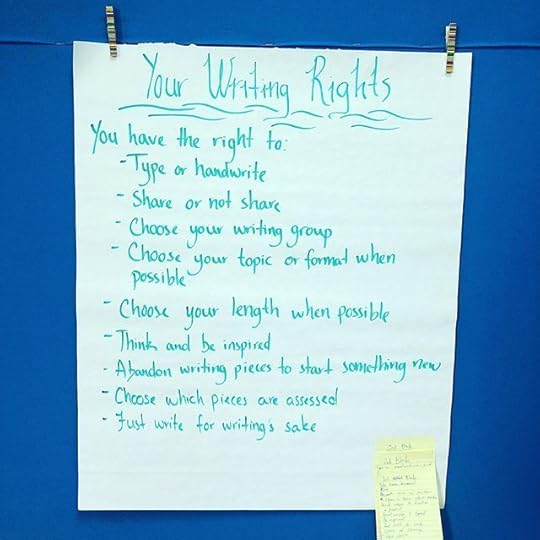 This year’s writing rights, the yellow post-its are my notes from their group discussion.
This year’s writing rights, the yellow post-its are my notes from their group discussion.Then I wanted to introduce the concept of writing circles to students using something I knew they were familiar with; lit cirlces. How are writing circles like literature circles? I showed my students this side-by-side comparison to help them get thinking about the potential process and benefits waiting for them.
[image error]
So first, what are the components of our writing circles?
Students choose peers to be in their writing circle – 3 to 4 people through an interview.They write together, physically, as well as at times, actually in the same project.They can write on the same topic but in different formats.They share their work, discuss and encourage each other.They serve as editors for each other providing critical and constructive feedback.They serve as long-term writing partners and will, hopefully, develop further skills from each other, as well as develop a more natural writing relationship.They build accountability toward the group and the group is an immediate circle to turn to for help.
The first step toward establishing their writing circles was to reflect on their own writing identity once more – see the screenshot below. This was a continuation of the discussions we have had where they have reflected on how writing intersect with them as human beings, that started with their writing survey for the year.
[image error]
After they had reflected, they then interviewed seven other people in order to hear more about their writing identity. This was on the same sheet and looked like this – very similar on purpose. To see the full survey, go here.
[image error]
Why seven? I wanted them go beyond their friend zone and knew that for some that would take a few people. Once they had interviewed seven people, I then asked them to reflect on the following questions.
Looking at other people’s habits, who may strengthen your skills as a writer? Note, these are people who have DIFFERENT strengths than you.Looking at other people’s habits, who may not be a good fit for you because you share the same areas of growth or skills.Looking at other people’s habits, who may you help grow as a writer? Compare your marked areas of strength to theirs.Choose only three peers who you think may be a good fit and who will help you grow as a writer. Go outside of your comfort zone if it will help you grow.If you want, you can add peers who you do not think will be a good fit, this is only for strong reasons, not to list all of the people you don’t want to be with.
Once they had reflected, they handed the surveys in to me and the puzzle began. I told them I would try my best to have at least one “wished for” peer in their group but also knew that some kids may benefit from other peers than the ones they selected.
The following day, their writing circles were revealed. We told them it would be a test run to see how they did with each other and that we would reassess as needed. While almost all groups worked out beautifully right away, a few needed minor tweaks which we handled within a day or two.
After the reveal, we asked them to find a designated spot that would always be their meeting spot. While many chose great spots, a few didn’t, and after a few days we did create new spots for some groups that allowed them to work better together. The main culprit was having space to speak to one another and space to have their materials and with 29 sudents it can get a bit tricky. Then inspired by Tricia Ebarvia’s Jenga games to start off the year, we had them play Jenga with each other in order to get to know each other. Here are her original questions, here are the questions we ended up using, some new, many of them hers. I had bought 5 Jenga games and split them into 9 games with 30 tiles each and it worked out perfectly. not only did it allow us to see how the circles would function as a group, but they also got a chance to get to know each other more. Thank you so much, Tricia for sharing all of your work around this!
Then, it was time to actually write something. And so we have been. We have been doing small prompts that they have shared with each other, they have read personal essays and memoirs and discussed them, they have written 6 word memoir, and most importantly they have shared their beginning writing with each other. As the students just submitted their first draft of a memoir or a personal essay, upcoming usage of their writing circle will be:
Navigate the feedback we have left – what does it really mean? Where do they need to start?Be peer editors – we will be working on specific revision skills in order to help them edit each other’s work better as this is not a skill they are ready to just take on. As I model my own revisions, they will be doing the revision work on each other’s.Search for “simple” mistakes such as conventions of writing that their own eyes may miss because it is too familiar with the writing.Challenge them in their writing, hold them accountable to create better writing than what they started with.Assess each other’s writing using the rubric and comparing it to their own self-assessment.
On Monday, as we start a wonky week where the only academic day we have together is Monday, they will write a group story as we have been discussing components of great stories. They will then act it out. So far, having this built in writing community has benefitted us in a few way:
They already know who to be with when they are writing and since they are mostly peers they have chosen there is a more natural collaboration happening.They have each other to ask when they are stuck, when they are fleshing out ideas, as well as when they think they are done but need someone else to look at it.They don’t have to wait for the teachers to look at their writing, they can go to each other first and then when their time is for a conference with me, they can come right up rather than waste time.The students really seem to like it, no groans or moans when we ask them to get with their writing circles. There is a lot more talk surrounding their writing, which was the main goal. We wanted to work on the social aspect of writing and to offer the kids a way to know that they are not alone when they feel burdened by writing.
I will continue to share the work of these writing circles as they will be a year-long endeavor, but wanted to share this for now. If you have any questions, please ask, I am just learning myself.
If you like what you read here, consider reading my newest book, Passionate Readers – The Art of Reaching and Engaging Every Child. This book focuses on the five keys we can implement into any reading community to strengthen student reading experiences, even within the 45 minute English block. If you are looking for solutions and ideas for how to re-engage all of your students consider reading my very first book Passionate Learners – How to Engage and Empower Your Students. Also, if you are wondering where I will be in the coming year or would like to have me speak, please see this page.
October 2, 2019
I Am Reminded
We continue to get to know each other slowly. Dancing around each other in this forced community which we hope to make our own. Feeling each other out as we wonder where in each other’s legacies we will fit. Will we matter or will we be a forgotten chapter? Simply a footnote in a story that spans a lifetime.
Four weeks into a new school year and I keep thinking how I am already a much better teacher than I was when I started because of the truths these kids, my new students, are offering up. How though they barely know me, and yet in their stories enable us to start havinge these moments together that become our narrative as we weave our pasts together in order to create our future. At least for a little bit.
And I remind myself to slow down.
And I remind myself to pay attention.
And I remind myself to pick up my pen and take notice.
To start the conversations.
To listen fully.
To continue to search for connections, for the stories that pass easily in order to get to know them more.
To give hugs freely and feedback carefully.
To take a breath.
To take a moment.
To feel the power that the adult in the room inevitably holds even when we think we don’t.
And I am reminded of how writing identity carries so many emotions when a child bursts into tears in front of me not sure how to take my words surrounding their writing. Because we don’t know each other that well, not yet.
And I am reminded of how quiet it can be when a child tells me a part of themselves that they weren’t quite ready to share but shared it anyway and I hope I earned their trust a little more. Because they don’t know what I will do with the stories of their life, not yet.
And I am reminded of how much our students notice when they ask if I will do that thing for them that I did for that other kid, and was that a tradition and if not, it should be. That they don’t know that I will pretty much go along with most new traditions because that’s just who I am, not yet.
And I am reminded of the bonds we created the year before when the big 8th graders shout “Hey, Mrs. Ripp!” as they pass my room and sometimes sneak in for a hug or a book. And I wonder if any of the ones I get to teach now will even say hello next year.
Because these moments, the small moments that we take, the ones that we make through our conferring, through our greetings, through our questions and our listening. Through our shared read alouds, through our discussion, through our music playlists, through our stories. Those moments become the foundation for the trust that I hope these kids will place in me as I try to guide them down a path of learning.
Because what I am reminded of tonight as our daughter tells me that her day was great, as usual, but that there were not enough hugs, is that we have only just begun. That there should always be time for the hugs. For the moments. For the connections. And yet the pressure to cover the content, to get through the material, to offer up all of the opportunities to learn urges us on at a breakneck pace but that the only thing we will accomplish from caving to the pressure is relationships left behind.
So I pause once more. Plan accordingly and search for the moments that will tie us all together.
September 25, 2019
Illustrated 6-Word Memoirs
We continue to work on developing our writing communities, slowly settling into what it means to write together, to be writers, and to feel free to write. We have written directions, we have discussed the rules of writing, we have read great writing, and we have set up our writing circles. All this work is centered in identity. All this work is centered in learning who each other are and developing a feeling of safety and community as we grow into this year together.
Now we inch closer to writing personal essays on topics centered on our own lives and so we used the 6-word memoirs. This ingenious little foray into writing has a long history. A great place to read more about them can be found here. They are exactly what they sound like; 6 word stories about our lives.
I introduced them by showing them examples of other 6-word memoirs, some serious, some not so much. I showed my own example…
Then we discussed the perimeters of the challenge: Exactly 6 words, it cannot be a list of adjectives, should reveal some part of your life that you feel comfortable with.
Then the kids brainstormed for a bit it their writers’ notebooks, playing around with sentences, words, and punctuation.
When they felt satisfied with their chosen words, they had someone spell check their final sentence. A few spelling errors were missed, which happens.
Then they illustrated them using these free blank face printables. I printed one out and drew a line down the middle, then made enough copies with directions on this handout. One side was for them to illustrate either as a collage or as an abstract image of of their words. The other side was for their words. I told the kids that they would be displayed so to put their names on the back for privacy unless they wanted it to be known that they made it.
We listened to music. Kids played with words, drew, and then handed them in. I couldn’t believe the care many took. While certainly there were many that spoke of sports, dogs, and other seemingly small-ish parts of their lives, every single one spoke of something they found important or showed a sliver of their personality.
A small lesson that showed so much about their identity once again. See for yourself, how they turned out.
September 20, 2019
A Little More Grace
Maybe what we all need
is just a little more
grace
a little more
time
a little more
love
for ourselves
for our perceived flaws and faults
for the imperfections we pick apart
and hold up to the world
faster than anyone can point them out
to allow ourselves to fully breathe out
in order to
fully breathe in
realize that what we are doing
is enough
for now
that there will always be
more
that we will always need
more
of ourselves
of others
of money
of time
and yet the one guarantee that we all get
is that there is no
more
only now
so I am going to take my breath
care for myself
realize that the work
(always the work)
will still
be
there on Monday
and right now
just be glad that
today
I got to be
September 17, 2019
Kicking Off Our Reading Conferences For the Year
We are two weeks into the year and slowly the routines are starting to shape up. We know each other just a little. Our community is growing. The incredible inquisitive and funny nature of our 7th graders is coming out more and more. And every day we start the same way; twenty minutes at least of independent reading. Twenty minutes to “Settle in, settle down, and get reading.” Twenty minutes where I get to book shop with kids, check in on their day, and also do initial reading conferences with the kids as we start to get to know each other more. After all, how am I supposed to help them grow as readers if I don’t know them as readers, as people?
Our first reading conferences are simple yet effective as we start this journey together. All it takes is a few things: our reader survey, their goal setting as it ties in with their 7th-grade reading challenge, my note taking sheet, my home information sheet and time. Hmm, maybe that sounds complicated, but it is not. What these different things do is allow me to slowly gather information on the students and open up conversation.
The reading survey helps me get insight into their reading habits and emotions tied in with reading. They do this within the first few days of school.
The goal setting sheet helps me understand where their priorities are. It’s part of our 7th grade reading challenge. This is about a week in after we set our reading rights.
The home sheet was used during our ready-set-go conferences prior to school starting but I also use it throughout the year to fill in more information. (The pronoun question/answer is an optional question from a different survey).
And my note-taking sheet, a constant work in progress, gives me a place to keep all of my information, in order to have a place to remember our conversations by.
Every class has its own binder where the information is placed alphabetically, and that’s how I start; alphabetically and call up two or three students every day during their reading time.
A few easy questions start us off: When we meet would you prefer to come to me or me come to you? (Many prefer the relative privacy of coming to me). Which book are you reading, how did you choose that one, how would you rank it on a scale from 1 to 10?
Then we move into their reading goal. Questions I ask are: What is your goal, how come you set that, and tell me more about your reading life last year? I take relevant notes throughout our conversations and I make sure the kids can see what I am writing down, I don’t want them to have to worry about what I may be recording. There are often follow up questions but I also want to be cognizant of wait time and the delicate nature at times of reading and how kids feel about themselves as readers.
Then we discuss their progress, how is it going? How is the book working for them? How is reading outside of English going? We also discuss what is hard about reading, no surprise, even my most adapt readers have challenges. Finally, I ask them if there are things I can do to support them right now better as we get to know each other. Many don’t have ideas right now but I like the openended question in case they do.
As we wind down, I ask them a few more questions. What is their favorite color? What is their favorite treat? And what do they do well? This information is used throughout the year as I celebrate them. It also gives me a peak into where they see themselves right now, many kids tell me they don’t do many things well, and so I always try to help them see great things about themselves.
I thank them for their time at the end. Thank them for investing in our class and allowing me this time with them and that I look forward to helping them grow this year.
The next time I meet with them, there are less questions so the conference goes quicker. Then it starts with, ‘What are you working on as a reader?” as you can see from the note-taking sheet and then evolves from there.
A simple way to start but one that sets us up together to work on reading, to maybe better their experiences in reading, to make it matter beyond the work, the pages, the labor that it is for some. I am so grateful for these kids and the conversations we get to have.
If you like what you read here, consider reading my newest book, Passionate Readers – The Art of Reaching and Engaging Every Child. This book focuses on the five keys we can implement into any reading community to strengthen student reading experiences, even within the 45 minute English block. If you are looking for solutions and ideas for how to re-engage all of your students consider reading my very first book Passionate Learners – How to Engage and Empower Your Students. Also, if you are wondering where I will be in the coming year or would like to have me speak, please see this page.
September 13, 2019
A Few Suggestions for Newer Inclusive Short Story Collections
One of the questions I am posed a lot is where others can find amazing short stories to use with their students and while I have a file folder that I keep myself, I am also thrilled that there are so many amazing newer collections that we can use to start conversations, as mentor texts, and just for overall inspiration.
We continue to want to emphasize the work of those whose voices have historically been minimized and so many of the short stories I use with kids are pulled from these collections. There are funny, sad, thought-provoking stories so my best advice is to dig in and start to read some of these great pieces, and then, of course, share them high and wide.
 As many as I could fit in the picture – this post has a few extra titles that we also use.
As many as I could fit in the picture – this post has a few extra titles that we also use.While some of these are great for many ages, some of these only have certain stories suited for younger ages or are solely for older ages. So read the stories first before placing it in your library , which I would encourage you to do either way because many are amazing and not to be missed.
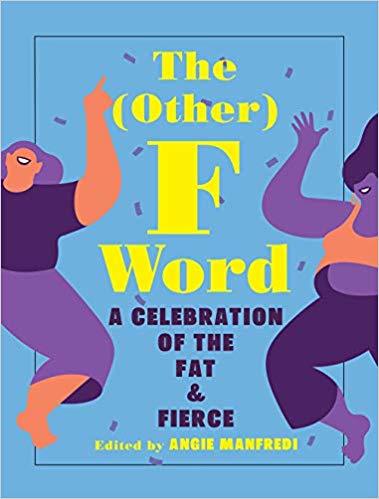 The (Other) F Word: A Celebration of the Fat & Fierce edited by Angie Manfredi
The (Other) F Word: A Celebration of the Fat & Fierce edited by Angie Manfredi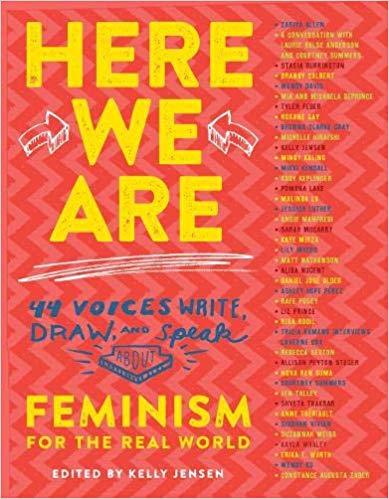 Here We Are : Feminism for the Real World edited by Kelly Jensen
Here We Are : Feminism for the Real World edited by Kelly Jensen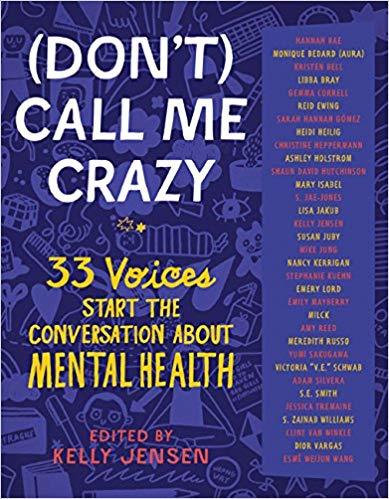 (Don’t) Call Me Crazy – 33 Voices Start the Conversation About Mental Health edited by Kelly Jensen
(Don’t) Call Me Crazy – 33 Voices Start the Conversation About Mental Health edited by Kelly Jensen 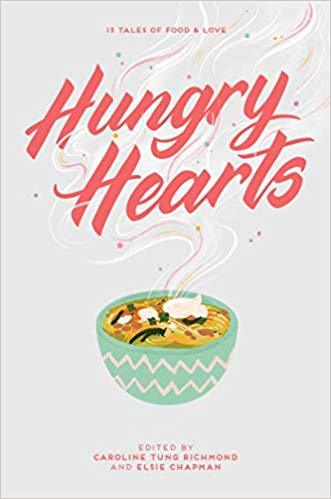 Hungry Hearts: 13 Tales of Food and Love edited by Caroline Tung Richmond and Elsie Chapman
Hungry Hearts: 13 Tales of Food and Love edited by Caroline Tung Richmond and Elsie Chapman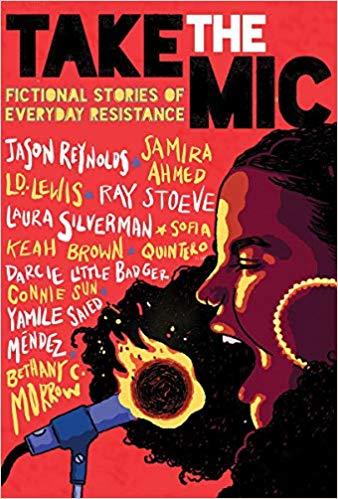 Take the Mic: Fictional Stories of Everyday Resistance
Take the Mic: Fictional Stories of Everyday Resistance 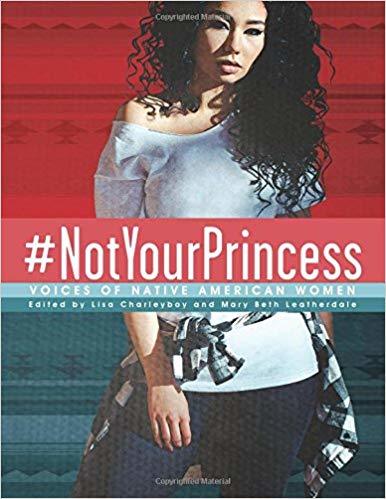 #NotYourPrincess: Voices of Native American Women Edited by Lisa Charleyboy and Mary Beth Leatherdale
#NotYourPrincess: Voices of Native American Women Edited by Lisa Charleyboy and Mary Beth Leatherdale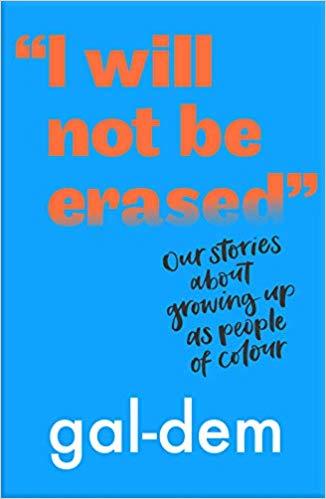 “I Will Not Be Erased” Our Stories about Growing Up as People of Color by gal-dem
“I Will Not Be Erased” Our Stories about Growing Up as People of Color by gal-dem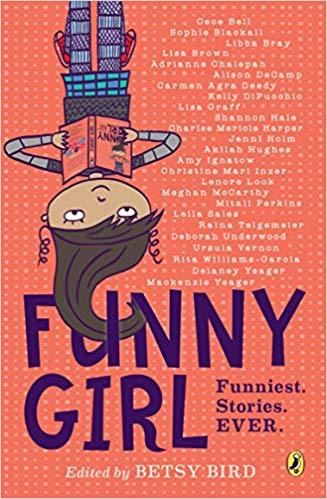 Funny Girl: Funniest Stories EVER. edited by Betsy Bird
Funny Girl: Funniest Stories EVER. edited by Betsy Bird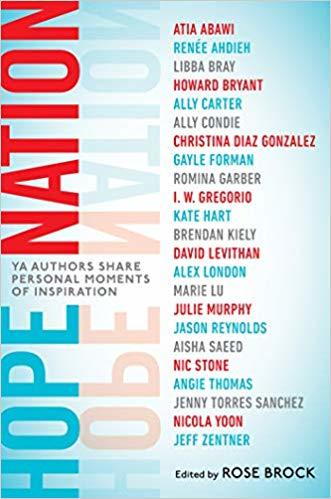 Hope Nation: YA Authors Share Personal Moments of Inspiration edited by Rose Brock
Hope Nation: YA Authors Share Personal Moments of Inspiration edited by Rose Brock Open Mic: Riffs on Life Between Cultures in Ten Voices edited by Mitali Perkins
Open Mic: Riffs on Life Between Cultures in Ten Voices edited by Mitali Perkins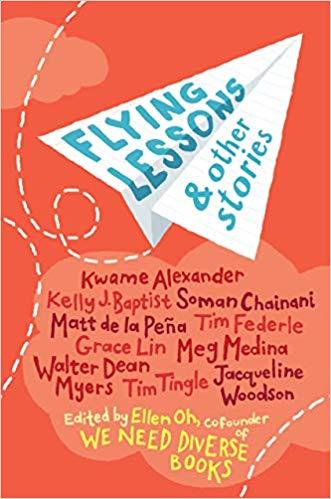 Flying Lessons & Other Stories edited by Ellen Oh
Flying Lessons & Other Stories edited by Ellen Oh Our Stories, Our voices: 21 YA Authors Get Real About Injustice, Empowerment, and Growing Up Female in America Edited by Amy Reed
Our Stories, Our voices: 21 YA Authors Get Real About Injustice, Empowerment, and Growing Up Female in America Edited by Amy Reed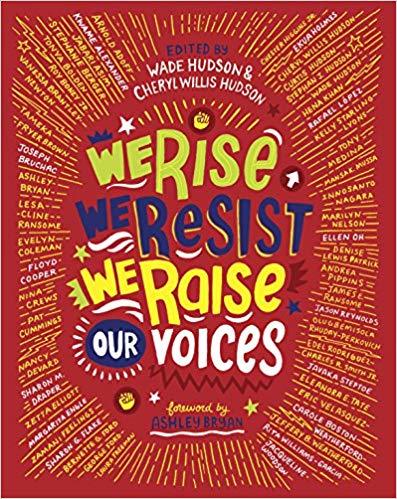 We Rise, We Resist, We Raise Our Voices edited by Wade Hudson & Cheryl Willis Hudson
We Rise, We Resist, We Raise Our Voices edited by Wade Hudson & Cheryl Willis Hudson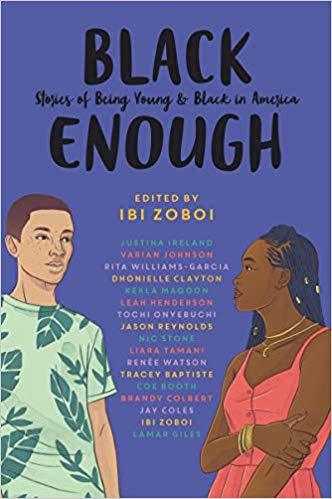 Black Enough: Stories of Being Young & Black in America Edited by Ibi Zoboi
Black Enough: Stories of Being Young & Black in America Edited by Ibi Zoboi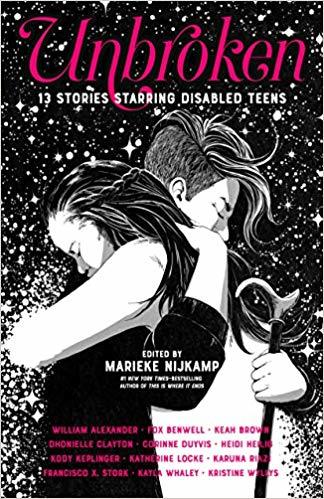 Unbroken: 13 Stories Starring Disabled Teen Edited by Marieke Nijkamp
Unbroken: 13 Stories Starring Disabled Teen Edited by Marieke Nijkamp 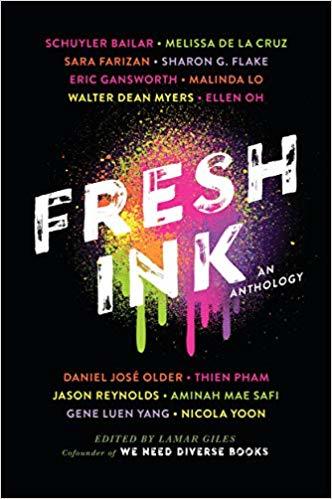 Fresh Ink: An Anthology edited by Lamar Giles
Fresh Ink: An Anthology edited by Lamar Giles The Hero Next Door edited by Olugbemisola Rhuday-Perkins
The Hero Next Door edited by Olugbemisola Rhuday-PerkinsWhich books are your go-to for great short stories? To see other favorite books, go here.
September 10, 2019
An Email Requesting For Our Children To Not Have to Do Reading Logs
Inevitably, every few years, one of our four children brings home some variant of a reading log. Typically it involves logging the minutes that that they have read every night, a signature, perhaps the titles as well and sometimes even the need to write a few lines about the book they read. Often times it is tied in with a reward; pizza, parties, extra recess.
And while it used to anger me that kids (and their adults) were being asked to do this work, I have realized that the request for a reading log is typically not anchored in any kind of malice. Rather, it is sent home with a genuine interest in the reading lives outside of school. With a hope that a child will make the time to read. With the hope that a family will make the time to read because it is now expected as homework. What is the harm in that? So every time we are presented with one, I find myself in a dilemma; do I say anything, ask for my child to be opted out, or do I let the practice ride? After all, there are bigger things to worry about when it comes to the reading experience of children.
And yet, I have seen the damage that the simple requirements of a reading log has done to my own children. When our oldest came home with our first one, she asked for a timer, set it for 20 minutes and when the alarm went off, she resolutely shut her book and told us she was done. No matter that she was in the the middle of a page, no matter that the previous nights she had read for a much longer time. The 20 minutes was all she needed to read. Or our son, who when he did a book logging program that offered up prizes didn’t care so much as to what he was reading or having read aloud, but instead would pick the shortest books in order to log as many titles as possible, so that he could get whatever prize was attached to the amount of books. Or how they make me a liar. I don’t know what my children are reading often, they are surrounded by books and while we talk about them we don’t always. So when I am supposed to sign off on their minutes or write down their titles, I do it gladly, without really knowing if it is true or not. Should I know every minute read and every book read, sure, if I had unlimited time in the day. Instead, we discuss many things in our household, books included, and focus on our time together not just the homework they have to do.
When I ask my students to discuss their negative experiences, reading logs rise to the top. It doesn’t matter if it was only for one year or even for a shorter amount of time, having to account for the minutes read did little to inspire further reading, but instead added yet another to-do to their to-read. So last night I sent out the following tweet, and with that comes this post, because it turns out there were many that also have wondered how to advocate for their own child when faced with a reading log or other potentially harmful measures.
[image error]
So I have an email that I send when the reading log comes home, and I do hesitate to share it here because I am sure to some it is not enough, and yet, in my years of teaching, I have found that engaging in dialogue with other teachers about their practices from a lens of genuine interest is going to take me so much further than citing research, telling them about the wrongness of their choices, or in any other way trying to prove that I am right and that they made a mistake. No teacher wants to be shamed, and why should they be for this?
So the email I send in its edited form is simple:
Hi,
I saw the reading log sent home today and wanted to ask a few questions, if you don’t mind.
A big focus for our family is that reading is its own reward so we don’t tie anything to her reading; no minutes, no prizes. She needs to understand that reading is something you do for personal enjoyment and not outside gifts. In the past, when (insert child’s name here) has seen the time requirement, she right away told me that was all she had to read for. We don’t want her to think that there should be a maximum time for reading, but instead follow her natural rhythm for reading when she has a great book.
Are you ok with us not filling it out and instead me giving you my word that (insert child’s name here) reads every night for at least 30 minutes? Is there another way we can show our accountability to reading? We read every day so it won’t be a problem.
I hope this doesn’t come off as rude, I don’t really know how to put it in other words. We love you as a teacher and so does our child and want you to feel supported. If you would like to discuss this in any way please let us know.
Best,
Pernille
I could cite the research, I could go on for a long time about the damage of reading logs and offer up other ways to measure reading. Or I can simply ask questions and see what happens. We have never needed to do any of those other steps because often it is not the teacher that mandates the reading log but rather a team, a school, or a district. And that teacher deserves my respect and gratitude for the care they give our children.
Would I though if I had to? Of course. The reading lives of my own children and others is too important to let linger in harmful practices. So here are my other posts on reading logs if you need them, including one that discusses how you can make it an option or other ways to see if kids are reading. For now, I will wait to hear back.
If you like what you read here, consider reading my newest book, Passionate Readers – The Art of Reaching and Engaging Every Child. This book focuses on the five keys we can implement into any reading community to strengthen student reading experiences, even within the 45 minute English block. If you are looking for solutions and ideas for how to re-engage all of your students consider reading my very first book Passionate Learners – How to Engage and Empower Your Students. Also, if you are wondering where I will be in the coming year or would like to have me speak, please see this page.
September 8, 2019
Before We Hand Them a Book
I’ve been thinking about the hurry. The rush to get into habits. To get kids reading. To get kids writing. To not waste a moment of instructional time so that we can get to the real work. I see it surround us, this pressure to get moving, to get going as quickly as we can so we don’t lose time. So we don’t miss our chance for cramming as much as we can into a year. After all, we only get them for so long and the tests will tell us whether we did enough.
It plays out a lot when we meet kids who don’t like reading. Who either proclaim it loudly, or whose behaviors clue us in. The aimless browsing, the grab-and-go when it comes to book selection. The kids who go with the motions at times but you can tell that the book they are currently reading is not one that is going to make it home. Who look at us wide-eyed or with a grin when we tell they we hope they will read over the weekend.
We rush them with book recommendations. Have you tried this one or this one? We tell them they just haven’t found the right book yet and then we hand them a stack hoping that in that stack will be that right book. You won’t know until you start reading, so read.
And I get it, I do it too, after all, the year looms and we have so much work to do. Yet, to quote Taylor Swift, I feel we need to calm down. To take these moments, these aimless wanderings, these negative reading relationships, and ask more questions. Sit in silence and let kids think. If a child can’t answer why they hate reading beyond that they just do, then they haven’t been given an opportunity to fully think about their relationship with reading. They haven’t been given a moment to recognize that their path with reading has been filled with choices, both their own and others, that have now brought them to this point in time where they feel that they are not readers. That reading has no value. That reading is not something they need. Nor something they feel they can do.
So when we hand them another book without conversation beyond “What types of books do you like?” Without seeing the child and giving them a chance to reflect, we are not changing habits long-term. We are not changing lives long-term. Sure, they may love that book – hooray – but what happens when the book is done? Have they really changed their relationship with reading or was it just a fluke?

So before we rush to our piles of recommended books, we slow down. Yes, we surround them with incredible books, people who love to read, we give them time to read, we give them the space to read, the air to read, and then we talk. (This should be a right not a privilege of all kids). We reflect. We give kids the opportunity, the expectations, to know themselves as readers so that we, the adults that surround them, can invest in long-term change.
I am not teaching kids to just like reading this year. I am trying to teach kids to find value, inherent value, in the act of reading itself. While books and texts are the tools, the real work starts with the recongition of one’s own journey and subsequent relationship to reading and how it impacts the child that stands before us.
It takes time. It takes patience. It takes careful planning. And it takes us realizing that being a reader is not just something we want kids to experience in the brief time they are with us, but instead be a part of their being that exists without us after the year is over. That doesn’t just start with a book. That book needs to be wrapped up in reflection, in time, and in conversation. Then changes may happen.
If you like what you read here, consider reading my newest book, Passionate Readers – The Art of Reaching and Engaging Every Child. This book focuses on the five keys we can implement into any reading community to strengthen student reading experiences, even within the 45 minute English block. If you are looking for solutions and ideas for how to re-engage all of your students consider reading my very first book Passionate Learners – How to Engage and Empower Your Students. Also, if you are wondering where I will be in the coming year or would like to have me speak, please see this page.
September 5, 2019
Planting the Seeds for Our Year of Reading Together
Today, we managed to pull off the unimaginable; every child walking out of room 203 with a book in their hands that they are willing to try tomorrow, which will be our first day of independent reading.
How did we do it? Well, a few things had to happen.
We gave it some time. While our students have certainly been surrounded by books these past few days, we have worked our way slowly toward book shopping. Some kids have checked out books because they asked but many looked more warily at the books surrounding them. Taking it slow, for us, has worked because we can offer up an opportunity to establish some trust and community before we dive into book shopping.
We read aloud. Read alouds tie us together as a community which is why I love to use picture books often with our students. It also allows us to dive into conversations about consent (Don’t Touch My Hair), how we feel about reading (I hate Picture Books!) and the expectations we want to function under in our room (We Don’t Eat Our Classmates). Read alouds ease us into the important work we are doing while exposing us to others’ stories.
We had some powerful conversations. Starting with our beginning of the year reading survey which gave me a sneak peak into how the kids see themselves as readers. While many are okay or even great with books and reading, some are decidedly not and the survey starts to let us see that. We then move to discussing the feelings and experiences tied in with reading as detailed in this post. This year the students decided to share when reading is dope and when it is trash. This then laid the groundwork for revealing the 7th grade reading challenge, as well as setting a meaningful reading goal to begin the year.
They determined their reading rights. After we have discussed their past experiences with reading, both the good and the not so good, we brainstorm which rights we would like to have for our independent reading time together. While there is not an option to not read, the students have great ideas for the type of reading experience they would like to be a part. After all three blocks of kids brainstorm, I created our chart which the students then approved today.
[image error]Reading Rights for 2019 -the yellow post-its are my notes from their conversations in order to make sure I stayed true to their hopes.
We have reading loving staff members. And not just this year. I am fortunate to work in a district that emphasizes the joy of reading in many place and I am part of a chain of people who spend a lot of time trying to match kids with books and also protect how their readers feel. While kids come in with many different experiences when it comes to reading, many also speak of the great moments they have had with reading throughout the years. And this only furthers the work we get to do in 7th grade.
We have lots and lots of books. While my district funds books, which seems to be a rarity these days, I have also spent a lot of money on books throughout the years, I wish this wasn’t the case, but it is what it is. However, our district also funds our school library and has staffed it with an amazing librarian and library aide. This provides our kids with the opportunity to not only look for books in our classroom, but also in the library and other places that have book collections. It is a powerful partnership between many of us that only continues to expand.
We took the time today to discuss how to find a book. While book shopping and book selection is not something new, centering our book shopping in what they already know and discussing the habits they have provide us with a place to start. It introduces our classroom library as well as our check out policy. It also helps us remind kids that they have a lot of strategies to try a book on, as well as to remind them that to cease reading a book is always an option at any point. We would much rather have them spend a lot of time selecting a potential great book than just rushing through the process.
So we gave them time. As much as they needed to touch the books, to browse the books, and to discuss the books with each other. I had pulled several stacks of books, one per table, to get their interest but they knew that they could browse the entire classroom. They could check out whichever book(s) they wanted and all of the other potential titles they put on their to-be-read lists. And it worked. Every child was up and moving, every child left with a book or more. To see so much book excitement was frankly a major highlight of this whole week.
What were big interest books today?
The Hate U Give by Angie Thomas
On the Come Up by Angie Thomas
Until Friday Night by Abby Glines
Everything Everything by Nicola Yoon
Now don’t be fooled, the work is far from over. But this is a start, a seed that will continue the work we do as we try to help some of our students go from kids who see little to no value in reading to kids who do. As we help kids continue the already positive relationship with reading that they have. But it also work that is shrouded in privilege. Our kids have access to books. Our kids have access to teachers who love reading. Our kids have time to read. Every child deserves that as an educational right.
For me the best part is; I am not alone in this. Our school and district is filled with people pursuing the same goal that I am; helping kids find books that matter, helping kids see themselves as readers. Today was a start and I cannot wait to see how it continues to evolve.
Tomorrow we read.
If you like what you read here, consider reading my newest book, Passionate Readers – The Art of Reaching and Engaging Every Child. This book focuses on the five keys we can implement into any reading community to strengthen student reading experiences, even within the 45 minute English block. If you are looking for solutions and ideas for how to re-engage all of your students consider reading my very first book Passionate Learners – How to Engage and Empower Your Students. Also, if you are wondering where I will be in the coming year or would like to have me speak, please see this page.
September 4, 2019
After the First Day
I have been awake since 4 AM. Call it the first week jitters, exhaustion, or just the buzz of the never-ending to do list as the year finally, finally, gets underway. The students showed up yesterday and our second day together beckons. I cannot wait to see how it will go because we all know that the first day of school carries a certain excitement, but that it is the second day of school and all of those after that are the true test. Will this year be worth it in the eyes of students? Will these teachers, the adults that surround them, really care?
As I look back on the blur of the first day, a few things stand out.
Learning names is so important, and so is learning their pronunciation. I spend a lot of time in the weeks leading up to the first day simply looking at student pictures. I label what needs to be labeled in the classroom. We also meet with parents and caregivers that want to before school starts to learn about their child. And then we wait, because we won’t know a kid until we have met a kid and spent a lot of time with them. But their name? That shouldn’t take that long and neither should how to say it right. Today, as they walk in, I will try to address each of them by their name. By tomorrow I should have them down and if not, I start to owe them treats. Relationships are built in being seen, that starts with their name,
Your room will never be ready. I was as ready as I could be but the minute the kids showed up I saw a few problems with our space. The tables were too tight, there is no natural flow to walk through and where they store their notebooks created a traffic jam. After minor adjustments, we shall try again today, however, I also made sure to tell them that they can move the furniture as they see fit in order to not feel so crowded.
I had too much to do. I overplanned, I knew I did but not by how much. The day felt rushed and too full as we tried to do one thing after another. Today, two things are on our agenda – discussing consent and discussing why reading sucks at time. Yes, we got stuff done, but we didn’t slow down enough to just be together. That changes today.
What did I learn today? I am really trying to remember to gather information about my students that goes beyond the large stuff. This may sound dumb, but I fear that at times I learn things about them but then because I don’t write it down, it disappears. Yet knowing things about their lives, about them is what builds a relationship. So this morning, I am going through my student info sheets and just adding what I learned yesterday, even if the knowledge seems really insignificant.
Even a small note makes a difference. In my fog of exhaustion last night, I remembered that our team likes to send a “We had a great day and are excited for the year ahead…” and so we did and we think it matters, because there was a buzz in the building of excitement. Because at the end of the day even though the exhaustion felt tangible, we also left wanting to come back, excited for the year ahead, and that is something worth noting and celebrating. I also made sure to send thank you’s to my own children’s teachers, after all, they also had great days. Those emails or notes, they matter as we start to build a community of trust.
We get another chance. One of the best parts of teaching is that it is not just a day thing. Yesterday was just the beginning of what will be a year of learning, of exploration, of community, and of growth and today we continue that journey together. So even if the day before was not great, even if the day before was exhausting, we get another chance. And not just the adults, but the kids too, and that matters sometimes more than we know.
So here’s to many more days ahead. I cannot wait to see what happens.



